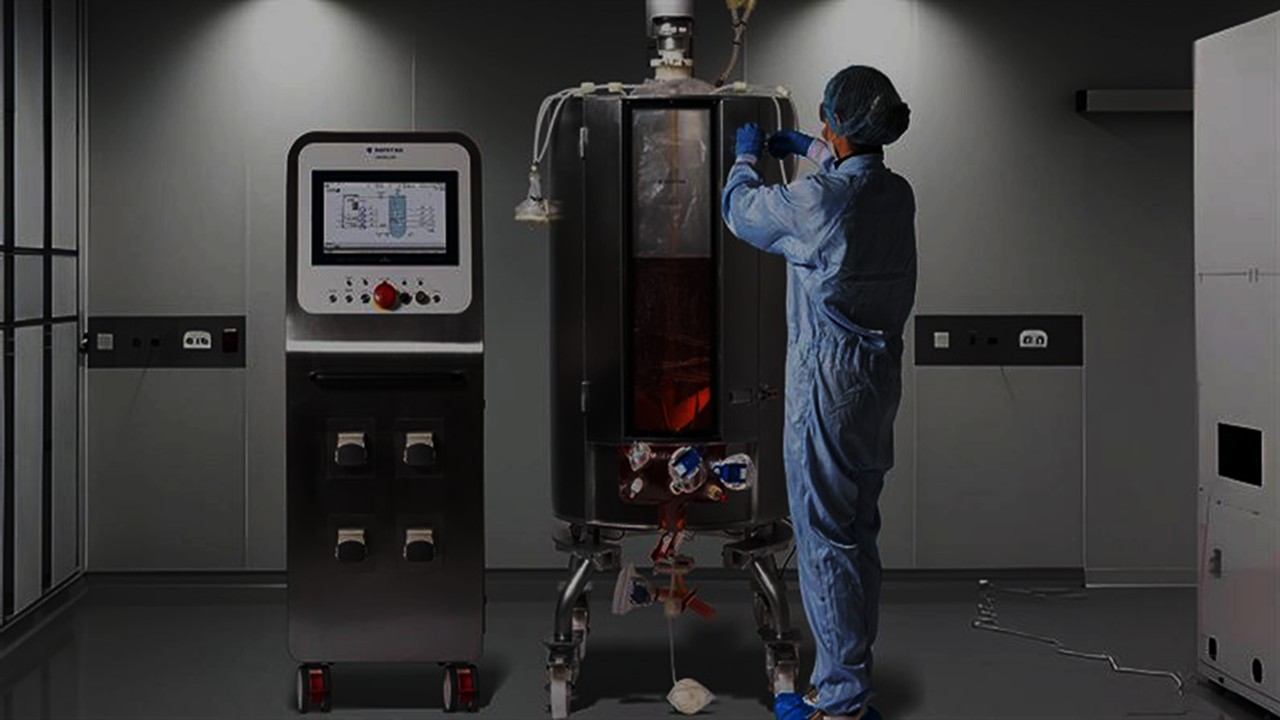The Fragile Supply Spine of Pharma in Crisis Mode
When global pharmaceutical markets turn volatile, traditional inventory strategies lose their structural coherence, and companies must abandon rigid frameworks for adaptable logistics paradigms. The fragility of single-mode systems—whether push-based for cost-saving or pull-driven for lean responsiveness—has been starkly revealed in recent disruptions spanning geopolitical sanctions, pandemic bottlenecks, and sudden therapeutic demand surges. In particular, high-margin biologics and cell-based therapies, which require precise environmental controls and rapid fulfillment, cannot afford the drag of obsolete stockpiling models. These high-variability items need systems that tolerate uncertainty while maintaining the precise cadence of supply necessary to support patient outcomes.
The core issue is not just about whether to centralize or decentralize, but whether to allow inventory protocols to behave adaptively based on real-time intelligence. During the height of global supply interruptions, companies relying solely on predictive analytics found themselves lagging behind those with hybrid adaptive-inventory algorithms that integrated live sourcing data, capacity reallocation, and forecast overrides. Cold-chain pharmaceuticals, for instance, suffered severe distribution breakdowns when solely modeled under demand-side projections without accounting for temperature-sensitive routing failures. The solution in many successful cases lay in activating local buffer stocks selectively—layering strategic safety stock systems across primary and secondary geographies using hybrid models.
This hybridity entails more than just the coexistence of different stockholding nodes; it includes the real-time modulation of which model dominates per SKU category, per distribution zone, and per threat probability. Organizations that layered their risk models with logistics flexibility were able to flip dynamically between just-in-case and just-in-time modalities. In one oncology-focused manufacturer, a logistics team reprogrammed its order fulfillment logic to switch between automated global replenishment and decentralized emergency release based on disease outbreak mapping algorithms. These operations leveraged cloud-integrated decision layers that could short-circuit legacy SAP-based MRP triggers when destabilizing events exceeded baseline thresholds.
Underneath this evolution is the deeper realization that pharma logistics must be reengineered as a resilient organ system, not a mechanistic assembly line. Strategic inventory management is no longer about spreadsheet-led demand fulfillment but about bio-responsive logistics that evolve like living tissue. The demand is not only for drugs but for the dependable cadence of therapy availability—and when that cadence is interrupted, lives, not just business forecasts, are on the line.
Dual-Tier Forecasting and the Pitfall of Static Algorithms
One of the gravest miscalculations in pharma logistics lies in over-trusting static forecast models that were built on low-volatility assumptions, treating past demand curves as reliable anchors for future behavior. Classical models, even those incorporating machine learning, tend to assume temporally smooth disruptions and linear recoveries, which don’t apply when pandemics, war, or raw material embargoes reroute the shape of global logistics overnight. These algorithmic tools are frequently overfitted to historical data and underperform under structural shifts, where volatility is endogenous rather than exogenous.
Hybrid inventory strategies began gaining favor because they embed multiple demand sensing layers—tier one from sales order trends and therapeutic penetration curves, and tier two from upstream signals such as active pharmaceutical ingredient (API) delays or regulatory slowdowns. When synchronized properly, these dual-tier systems allow supply managers to pre-emptively switch stocking strategies in anticipation of regulatory hiccups or competitive launches. For instance, a biosimilar manufacturer preparing for market entry in South Asia used patent litigation timelines as a leading inventory signal, redirecting warehouse capacity and accelerating pre-launch fill rates even before litigation formally concluded.
This responsive architecture can only be implemented when companies invest in dynamic feedback loops that displace static lead time assumptions. Instead of assuming a six-week lead for a compound under normal shipping conditions, hybrid models recalculate those assumptions hourly, pulling in data from real-time carrier API feeds, port congestion indices, and even local political stability sensors. The approach redefines forecasting not as projection but as probabilistic modulation—no longer about predicting the future but about managing pathways to multiple future states.
Critically, these systems also require modular override capability at the operations level. Field logistics officers must be empowered to override algorithmic orders when contextual intelligence—such as local strikes, customs delays, or regional blackouts—invalidates model-based priorities. One biologics supply chain head recounted how during a severe monsoon season, manual rerouting via drone-assisted delivery was triggered locally, bypassing the central model altogether, which had failed to factor in washed-out access roads. In hybrid systems, it is this empowerment to bypass the model that marks its success—not as failure of AI, but as a design for human-centric resilience.
Storage Buffering in a Biologics-First Era
As the pipeline of high-value therapies shifts increasingly toward complex biologics, monoclonal antibodies, and temperature-sensitive gene therapies, the need for multilayered storage architectures becomes unavoidable. Traditional warehouse systems based on ambient-controlled pallets and FIFO (First-In-First-Out) rules simply cannot accommodate the precision these new products demand. Hybrid inventory strategies now incorporate conditional buffering—stock that is not merely held in safety but is repositioned, reformatted, and temperature-revalidated in anticipation of volatile environmental and clinical conditions.
The role of regional satellite cold hubs has become central to these systems. In several multinational biotech firms, strategic buffers are no longer centralized near manufacturing plants but are distributed near clinical trial zones, tertiary hospitals, and even specialized pharmacies. These buffers act not only as storage but as conditional release zones, where final QA release and temperature-checking is completed just prior to dispatch, reducing risk from long-haul fluctuations. In one instance, an immunotherapy shipment was rerouted mid-transit from a central European hub to a Nordic buffer due to unexpected regional blackout alerts. The receiving buffer had redundant power backups, ensuring cold-chain integrity without regulatory breach.
These decentralized inventories demand specialized inventory signal architecture. Unlike traditional ERP modules, hybrid systems differentiate between live buffer stock, dynamic repositionable stock, and latent contingency stock. Live stock refers to doses ready for immediate drawdown based on clinical proximity and confirmed patient cohorts. Repositionable stock is mobilized when therapy demand shifts by geography or indication. Latent contingency stock sits in regulatory escrow—produced, validated, but not yet released—waiting on approval triggers or region-specific labeling. Only hybrid strategies can track and reclassify these layers in real time.
The metabolic cost of this hybrid buffering—capital lock-in, increased energy cost, and validation redundancy—is offset by the reduced rate of therapy cancellation, patient re-scheduling, and last-mile failures. Moreover, as precision medicine advances, patient-specific formulation further erodes the practicality of centralized models. What emerges instead is a responsive cellular model of inventory, where each node adapts, communicates, and activates in metabolic synchrony with the entire therapeutic organism.
Tech Stack Convergence: Cloud, Edge, and Cognitive Supply Chains
Hybrid inventory systems flourish when deeply integrated across a multi-layer tech stack that supports both macro decisioning and micro reaction. At the backbone of this transformation lies cloud-native platforms that ingest data from enterprise resource systems, third-party logistics feeds, and environmental sensors. But beyond cloud comes edge processing—localized AI modules that can make rapid decisions at distribution hubs without round-trip delays to a central server.
Consider a scenario where a high-value immunoglobulin therapy faces spoilage risk due to an unforecasted regional temperature spike. Edge AI running at a cold-chain logistics facility can autonomously trigger priority re-icing, adjust dispatch timing, or reroute the consignment to a better-equipped distribution node. These micro-decisions can occur in seconds and do not require human initiation, preserving product integrity and patient schedules. Overlaid cognitive supply chains then integrate machine learning models that suggest adaptive reordering policies, spot macro patterns in demand shifts, and test buffer reallocation scenarios across simulated what-if pathways.
Blockchain and digital twin models augment this ecosystem by ensuring data immutability and process traceability. For high-risk inventory scenarios—such as orphan drugs or compassionate use therapies—being able to verify chain-of-custody and environmental exposure history down to individual vials becomes a regulatory imperative. Hybrid inventory strategies, in this sense, are not only logistical frameworks but digital compliance systems, reducing the burden of audit while increasing trust among regulators and clinicians.
However, this convergence cannot be purely technical—it must be embedded in a change management philosophy that includes training, cross-functional accountability, and scenario testing. Procurement officers must understand how inventory decisions are no longer about unit price but about time-to-clinic. Pharmacovigilance staff must interpret inventory shifts as safety signals. And IT divisions must balance system security with operational flexibility. Hybrid inventory is not just a new structure. It is a new epistemology.
Therapeutic Demand and the Locality Challenge
The volatility of therapeutic demand often follows socio-epidemiological pulses that do not align with global supply systems. For example, a spike in local demand for anti-inflammatory biologics due to a regional environmental crisis (such as wildfires triggering respiratory conditions) cannot be met using conventional linear distribution. Hybrid inventory strategies respond by prioritizing therapeutic locality—ensuring that drugs reach populations in temporal sync with outbreak dynamics rather than in slow, seasonal waves.
Achieving this responsiveness requires locality-aware micro-distribution centers that sync with regional health intelligence systems. By embedding inventory signal nodes in community clinics, diagnostic centers, and even mobile health units, pharmaceutical supply becomes tightly tethered to real-world disease kinetics. These local nodes not only draw down stock but also serve as inventory intelligence feedback units, transmitting trends, failures, and urgent need spikes upstream to central planning.
One experimental program in South America involved embedding therapeutic buffers inside modular clinics that could be deployed in disaster zones. These clinics carried therapies for respiratory disease, vector-borne infections, and post-trauma care. When a mudslide isolated a rural province, these modules served not just as treatment zones but as autonomous resupply units—independent of main logistic arteries, drawing from local buffer stocks established using hybrid modeling.
This territorialized model is also helping decolonize pharmaceutical logistics by reversing the flow of decision-making. In hybrid systems, the periphery informs the center, not the other way around. This feedback inversion is key to equity in therapeutic delivery—ensuring that inventory systems do not just serve where markets are strong, but where patients are vulnerable, and speed is most critical.
Toward a Living Inventory: Pharma’s New Bioadaptive Nervous System
The future of inventory in the pharmaceutical sector does not lie in choosing between centralized versus decentralized, nor in binary toggling between push and pull systems. It lies in the orchestration of hybrid architectures that adaptively route inventory, decision authority, and buffer resources in real time based on therapeutic context, environmental stress, and sociological variables. This is not a supply chain—it is a bioadaptive nervous system.
Hybrid strategies are rewriting what logistics means in pharma. They transform it from a chain of movement into a choreography of readiness—where drugs are not just stored and shipped but pre-situated, pre-qualified, and pre-triggered for activation. The margin for error in this system is not measured in dollars but in hours of therapeutic delay, which in turn translates into clinical loss or survival.
It is no longer enough to be efficient. The requirement is now ecological precision—each drug, each dose, each distribution pattern must match the living rhythms of disease, infrastructure, and patient burden. This entails a level of logistics awareness that mirrors the cellular precision of the very therapies being distributed.
In a world increasingly defined by systemic volatility, hybrid inventory models offer not just resilience but regenerative power. They enable pharma companies to become not factories of drugs, but ecosystems of therapeutic flow—perceptive, dynamic, and continuously alive.
Engr. Dex Marco Tiu Guibelondo, B.Sc. Pharm, R.Ph., B.Sc. CpE
Editor-in-Chief, PharmaFEATURES

Subscribe
to get our
LATEST NEWS
Related Posts

Manufacturing & Logistics
Inventaria Optima: Optimizing Biotech and Pharmaceutical Inventory Control Under Demand Substitution
Managing inventory in the biotech and pharmaceutical industries is uniquely complex due to demand substitution.

Manufacturing & Logistics
Molecular Economics: The Precision Art of Lot-Sizing in Drug Discovery Supply Chains
Unlike bulk pharmaceutical manufacturing with its predictable campaigns, early-stage drug discovery operates in a landscape of radical uncertainty.

Manufacturing & Logistics
Optimizing Drug Supply Chains: Risk Mitigation Meets Operations Research in API Transport
Modern supply chain strategies now integrate advanced operations research techniques to mitigate risks while maintaining efficiency.

Manufacturing & Logistics
Optimizing Freight Consolidation: Unlocking Efficiency in Multi-Modal Transport for Pharmaceutical Supply Chains
By employing multi-modal systems, where goods are transferred seamlessly between different transportation methods, stakeholders in the pharmaceutical industry can unlock substantial improvements in both efficiency and cost management
Read More Articles
Mini Organs, Major Breakthroughs: How Chemical Innovation and Organoids Are Transforming Drug Discovery
By merging chemical innovation with liver organoids and microfluidics, researchers are transforming drug discovery into a biologically precise, patient-informed, and toxicity-aware process.
Tetravalent Vaccines: The Power of Multivalent E Dimers on Liposomes to Eliminate Immune Interference in Dengue
For the first time, a dengue vaccine candidate has demonstrated the elusive trifecta of broad coverage, balanced immunity, and minimal enhancement risk,











